
# RY6a - 1974 $200 Firearms Transfer Tax Stamps - booklet pane 10, dull blue & red
Own a Mint Booklet Pane of Firearms Transfer Tax Stamps
Seldom-Seen Revenues Still in Use Today!
First issued in the 1930s during an era when gangsters ruled the streets, Firearms Transfer Tax Stamps paid the tax on the sale of certain guns. This mint booklet pane includes stamps as well as the coupons that needed to be filled out when the guns were purchased. Discover more of the thrilling history behind these stamps below and add them to your collection today!
On June 26, 1934, President Franklin D. Roosevelt signed the National Firearms Act of 1934 into law. The act placed a tax on the manufacture and transfer of certain firearms, with new stamps being produced to show the tax had been paid. During the Great Depression, American gangsters such as John Dillinger, Ma Barker, and Bonnie and Clyde roamed the nation, holding up banks and killing police officers. It became known as the “Public Enemy Era,” and led to the formation of the Federal Bureau of Investigation. It also led to a new chapter in stamp history. In 1934, US Attorney General Homer Cummings wanted to reduce what were thought of as “gangster weapons.” Cummings, believing the Second Amendment prohibited the outright banning of firearms, instead proposed laws to restrict certain guns and make them more difficult to own. The result was the 1934 Firearms Act, which was known as the “Tommy Gun Act,” after a well-known automatic firearm of the time. The act was originally intended to restrict handguns and pistols, but they were eventually dropped from the legislation. The act was introduced to the House on May 28, 1934, by Robert L. Doughton and passed the House and Senate on June 13 and 18 respectively. President Roosevelt then signed it into law on June 26, 1934. The National Firearms Act of 1934 was enacted as part of the US Internal Revenue Code. The act levied federal taxes on the manufacture, sale, and transfer of certain classes of firearms used to commit violent crimes. This was the first time the federal government sought to control the sale of such weapons to private citizens. Due to the rise of organized crime in many US cities, the act had the support of the public. These were the days when crime families (syndicates) were fighting each other for territorial control. They endangered the public’s safety, not only with their criminal activities, but more and more with their gun battles with each other. The Firearms Act wasn’t designed to control all firearms, but rather those used by organized crime, such as “Tommy guns” (named after Thompson submachine guns), sawed-off shot guns and rifles, and other concealable weapons (handguns were included in the original draft, but later removed). It also included any gun with a silencer or muffler attached. The law called for a $200 fee (equal to over $4,000 today) to own any of the mentioned firearms – a hefty fee during the Great Depression. Payment of this fee was recorded with a revenue stamp. Also taxed, but at a fraction of the cost, were other unusual weapons, including those disguised as common objects such as canes, umbrellas, and cigarette lighters, that could be concealed and shoot ammunition. The tax for this class of weapon was only $1 from 1934 to 1960. It was later raised to $5, the amount of the tax today. Other less common weapons later added to the act included hand grenades, poison gas, and grenade launchers. In 1938, Congress modified the law to include firearms that had a legitimate use, such as hunting. One example was the “Marble Game Getter,” a short .22/.410 caliber sporting gun. The fee for weapons such as the Game Getter was dropped to one dollar. Firearms Transfer Tax Stamps are still in use today. However, since 1990 they haven’t had serial numbers printed on them and aren’t sold to the public in mint condition to avoid fraudulent misuse.Firearms Transfer Stamps

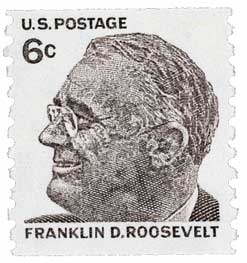
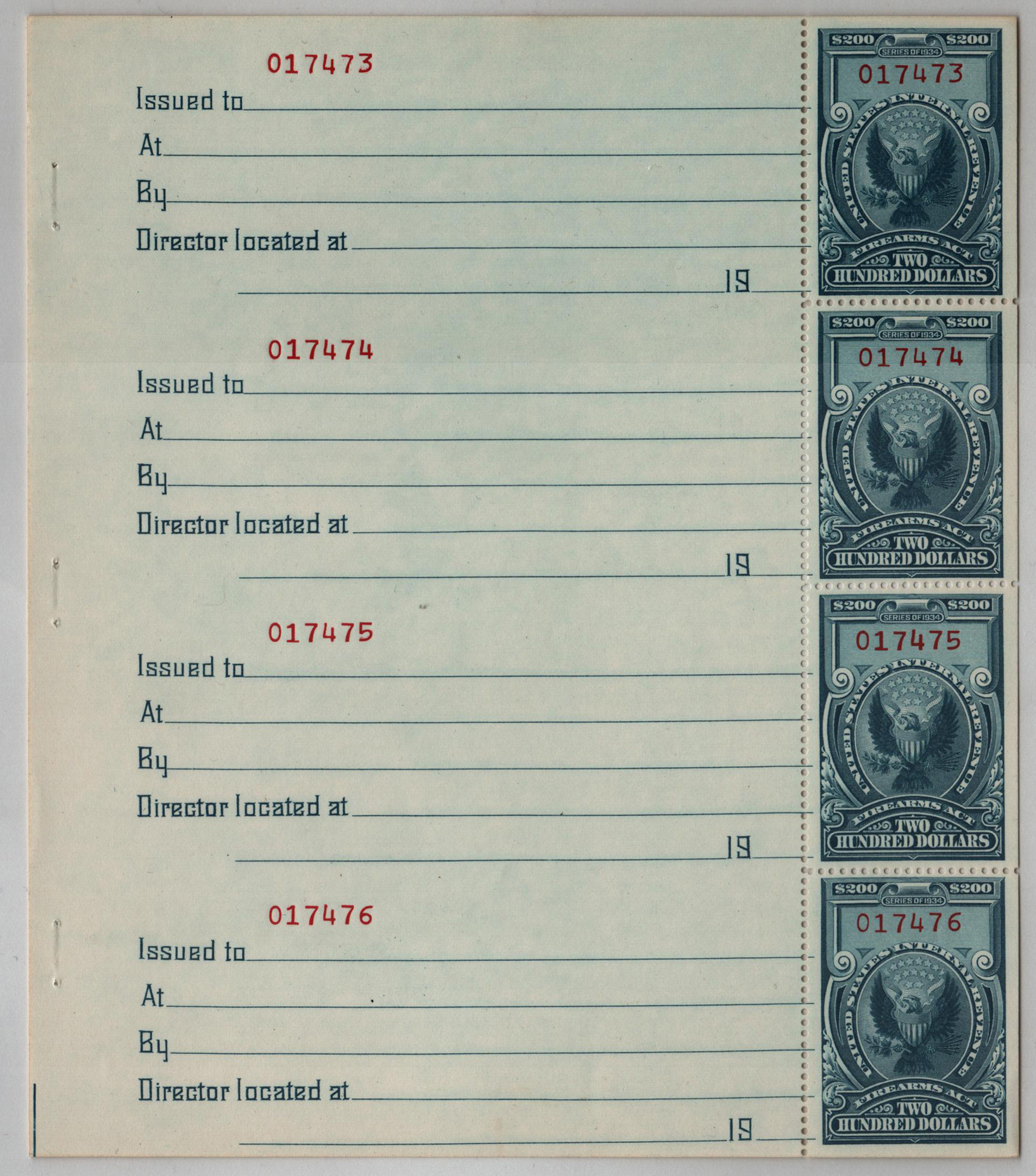
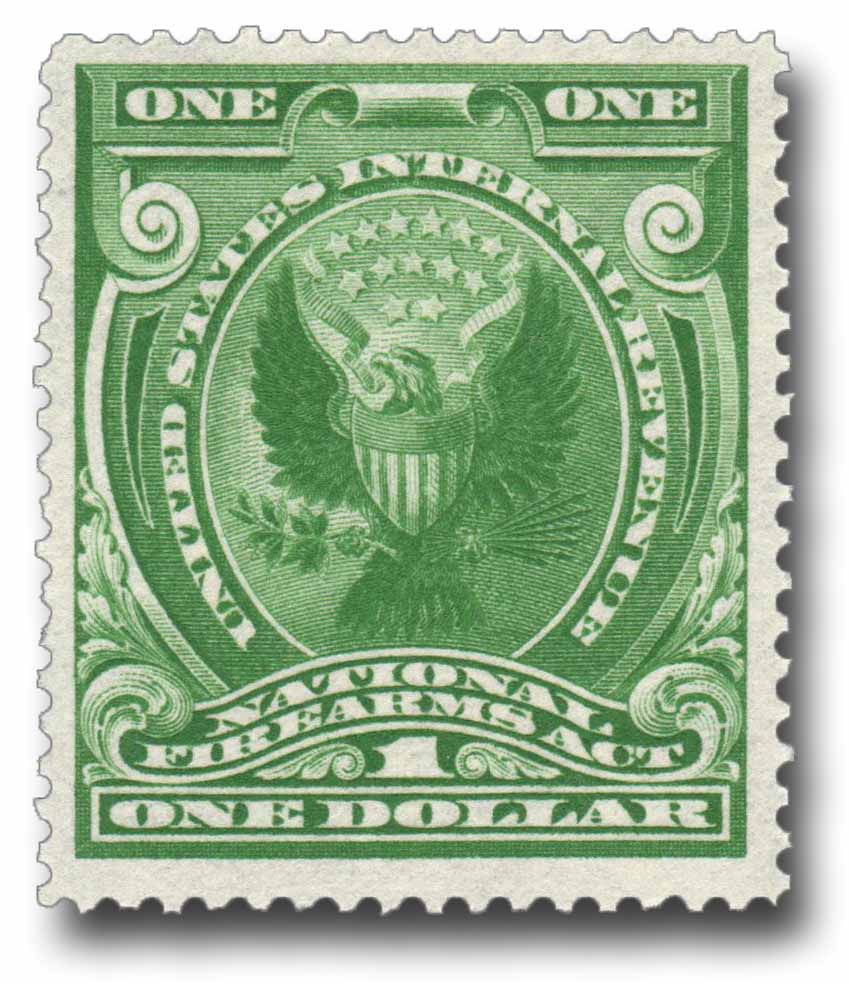
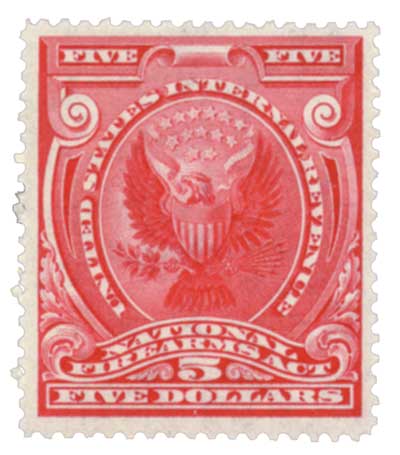
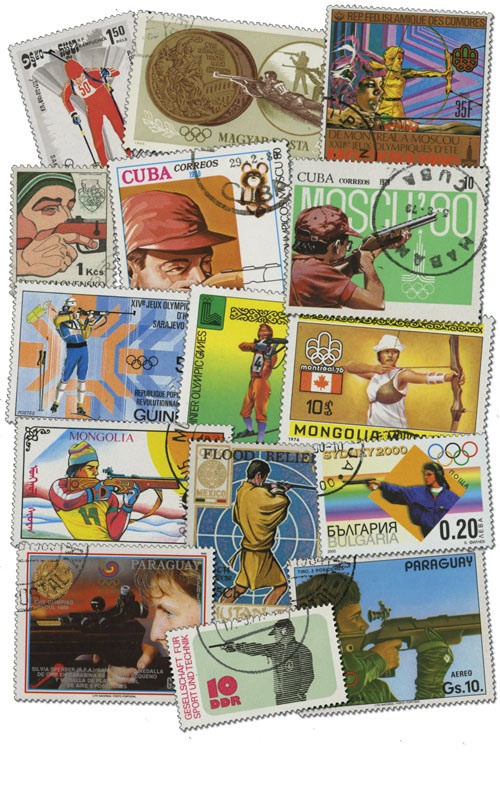
Own a Mint Booklet Pane of Firearms Transfer Tax Stamps
Seldom-Seen Revenues Still in Use Today!
First issued in the 1930s during an era when gangsters ruled the streets, Firearms Transfer Tax Stamps paid the tax on the sale of certain guns. This mint booklet pane includes stamps as well as the coupons that needed to be filled out when the guns were purchased. Discover more of the thrilling history behind these stamps below and add them to your collection today!
On June 26, 1934, President Franklin D. Roosevelt signed the National Firearms Act of 1934 into law. The act placed a tax on the manufacture and transfer of certain firearms, with new stamps being produced to show the tax had been paid. During the Great Depression, American gangsters such as John Dillinger, Ma Barker, and Bonnie and Clyde roamed the nation, holding up banks and killing police officers. It became known as the “Public Enemy Era,” and led to the formation of the Federal Bureau of Investigation. It also led to a new chapter in stamp history. In 1934, US Attorney General Homer Cummings wanted to reduce what were thought of as “gangster weapons.” Cummings, believing the Second Amendment prohibited the outright banning of firearms, instead proposed laws to restrict certain guns and make them more difficult to own. The result was the 1934 Firearms Act, which was known as the “Tommy Gun Act,” after a well-known automatic firearm of the time. The act was originally intended to restrict handguns and pistols, but they were eventually dropped from the legislation. The act was introduced to the House on May 28, 1934, by Robert L. Doughton and passed the House and Senate on June 13 and 18 respectively. President Roosevelt then signed it into law on June 26, 1934. The National Firearms Act of 1934 was enacted as part of the US Internal Revenue Code. The act levied federal taxes on the manufacture, sale, and transfer of certain classes of firearms used to commit violent crimes. This was the first time the federal government sought to control the sale of such weapons to private citizens. Due to the rise of organized crime in many US cities, the act had the support of the public. These were the days when crime families (syndicates) were fighting each other for territorial control. They endangered the public’s safety, not only with their criminal activities, but more and more with their gun battles with each other. The Firearms Act wasn’t designed to control all firearms, but rather those used by organized crime, such as “Tommy guns” (named after Thompson submachine guns), sawed-off shot guns and rifles, and other concealable weapons (handguns were included in the original draft, but later removed). It also included any gun with a silencer or muffler attached. The law called for a $200 fee (equal to over $4,000 today) to own any of the mentioned firearms – a hefty fee during the Great Depression. Payment of this fee was recorded with a revenue stamp. Also taxed, but at a fraction of the cost, were other unusual weapons, including those disguised as common objects such as canes, umbrellas, and cigarette lighters, that could be concealed and shoot ammunition. The tax for this class of weapon was only $1 from 1934 to 1960. It was later raised to $5, the amount of the tax today. Other less common weapons later added to the act included hand grenades, poison gas, and grenade launchers. In 1938, Congress modified the law to include firearms that had a legitimate use, such as hunting. One example was the “Marble Game Getter,” a short .22/.410 caliber sporting gun. The fee for weapons such as the Game Getter was dropped to one dollar. Firearms Transfer Tax Stamps are still in use today. However, since 1990 they haven’t had serial numbers printed on them and aren’t sold to the public in mint condition to avoid fraudulent misuse.Firearms Transfer Stamps

















